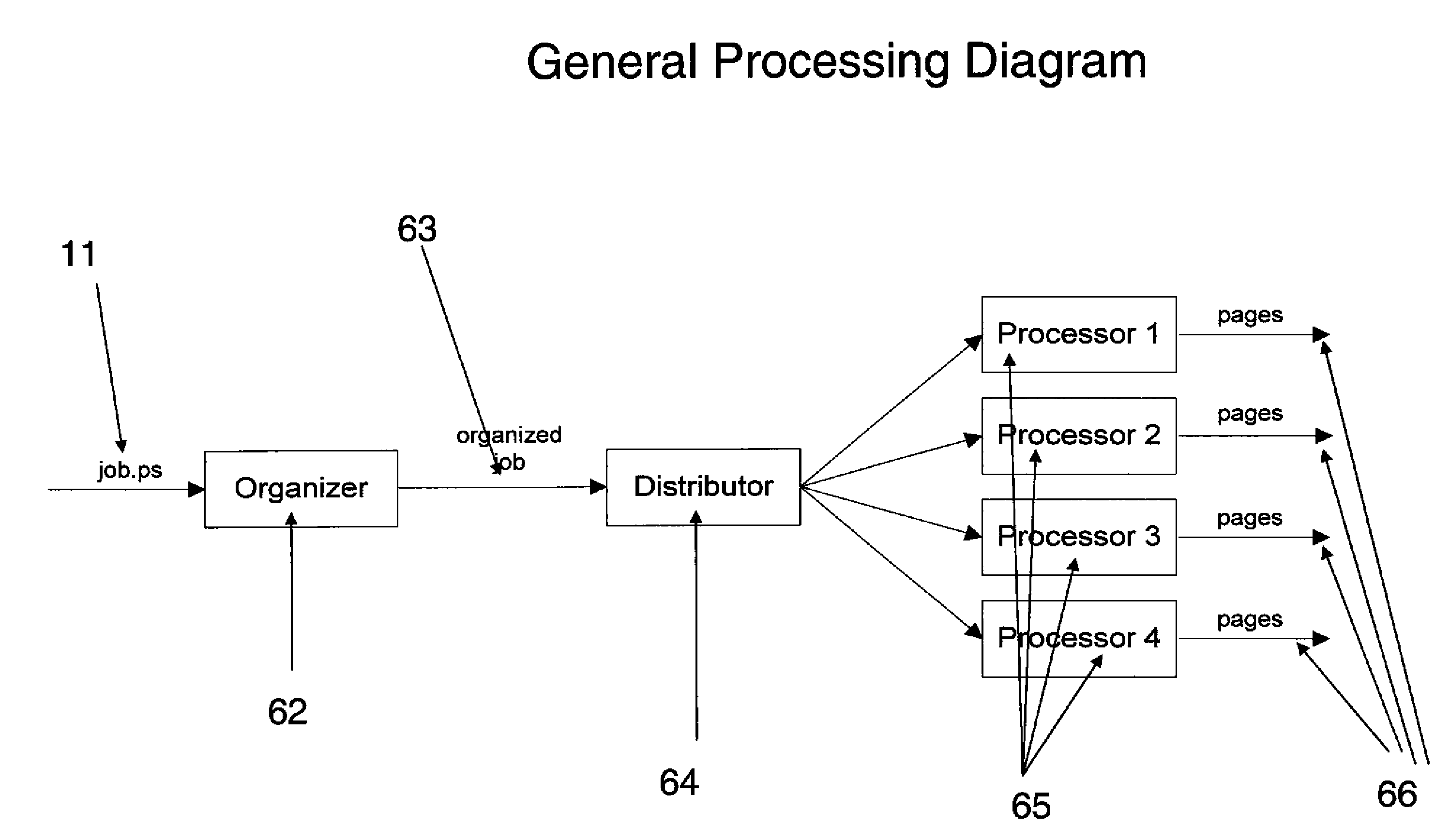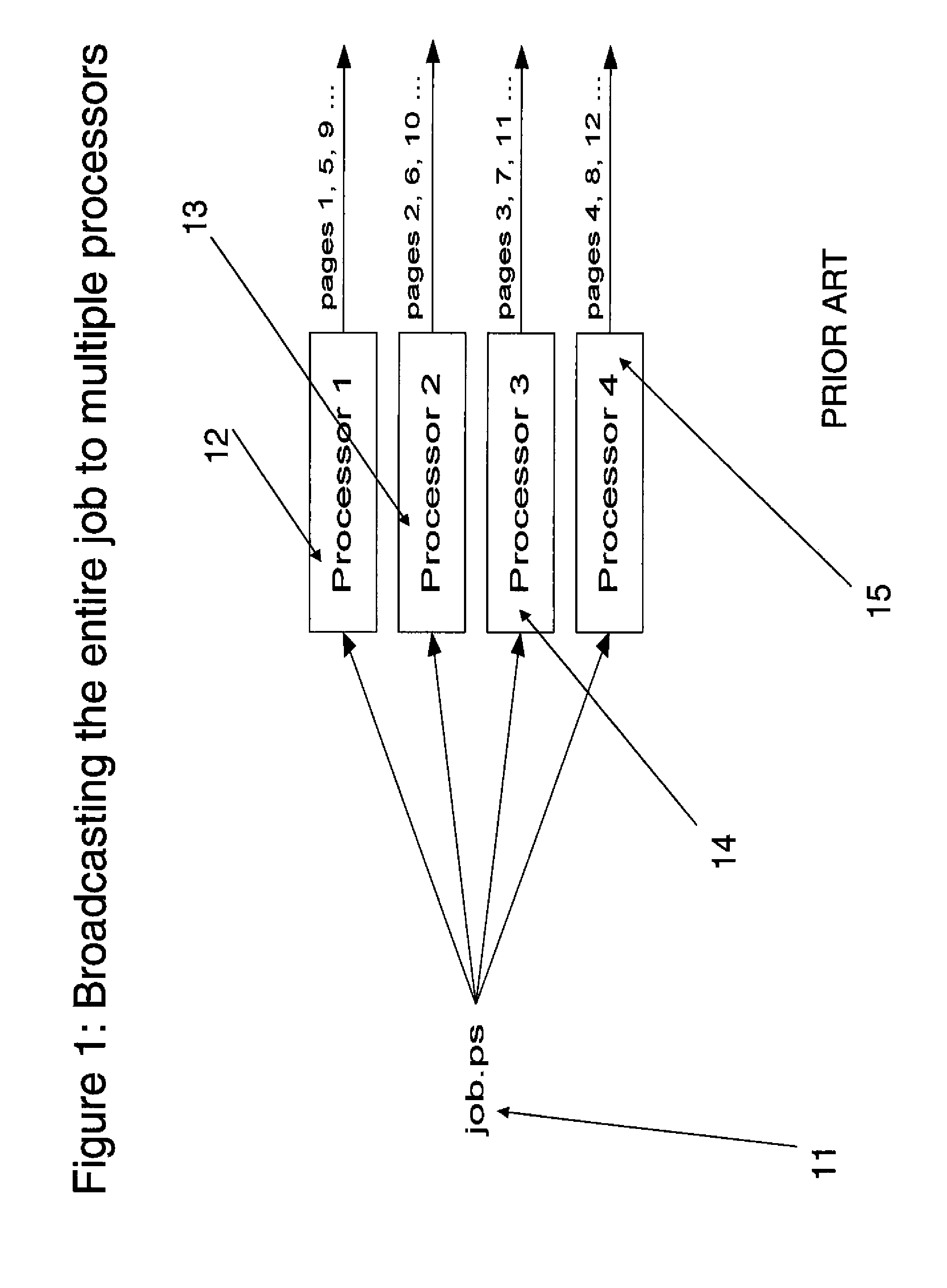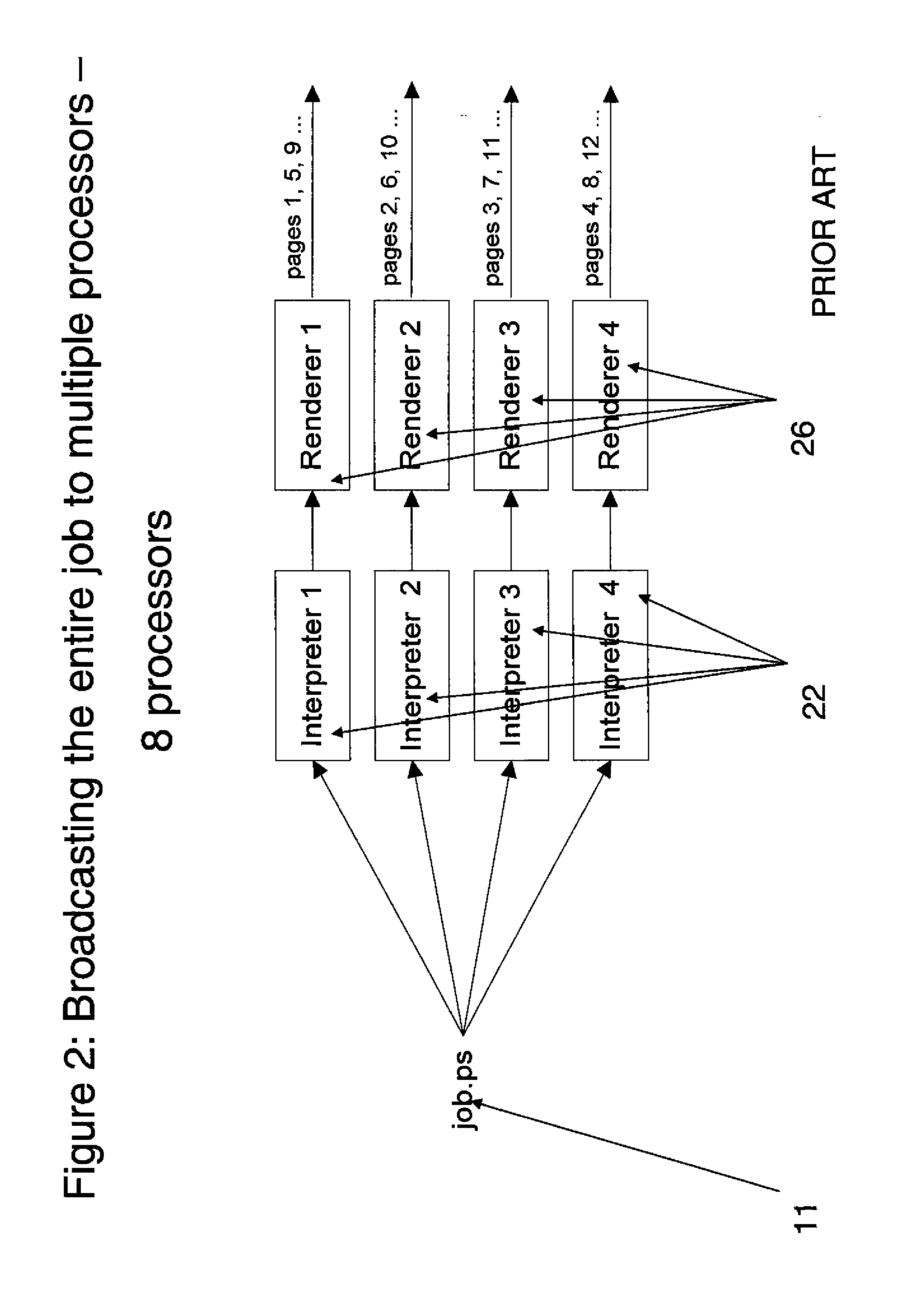Comprehensive print job skeleton creation
a technology of print job and skeleton, applied in the direction of digital output to print unit, instruments, visual presentation, etc., to achieve the effect of preserving original jobs and avoiding the overhead of writing modified jobs
- Summary
- Abstract
- Description
- Claims
- Application Information
AI Technical Summary
Benefits of technology
Problems solved by technology
Method used
Image
Examples
Embodiment Construction
[0096]This detailed description of the invention will allow a person of ordinary skill in the art to implement the invention in its full expression, while not limiting the creativity of the implementers in achieving the best possible performance and the ability to handle most efficiently all of the required producers.
[0097]While the present invention is described in connection with one of the embodiments, it will be understood that it is not intended to limit the invention to this embodiment. On the contrary, it is intended to cover all alternatives, modifications and equivalents as covered by the appended claims.
[0098]Achieving highest possible speeds using multiple processors for PostScript jobs and PostScript-based VDP jobs is a complex task and there is no good “mathematical solution” to it. This is why the invention is based on some conclusions that are verified by extensive experience in the field:[0099]1. Page-parallel printing does not require page-independence.
[0100]Page-pa...
PUM
 Login to View More
Login to View More Abstract
Description
Claims
Application Information
 Login to View More
Login to View More - R&D
- Intellectual Property
- Life Sciences
- Materials
- Tech Scout
- Unparalleled Data Quality
- Higher Quality Content
- 60% Fewer Hallucinations
Browse by: Latest US Patents, China's latest patents, Technical Efficacy Thesaurus, Application Domain, Technology Topic, Popular Technical Reports.
© 2025 PatSnap. All rights reserved.Legal|Privacy policy|Modern Slavery Act Transparency Statement|Sitemap|About US| Contact US: help@patsnap.com



